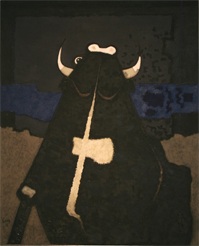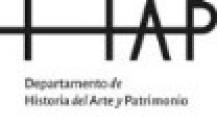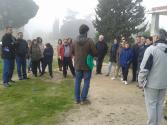
50 Years of Art in the Spanish Silver Century (1931-1981)
The project 50 Years of Art in the Spanish Silver Century (1931-1981) proposes researching, recovering and spreading the development of Spanish art during the five central decades of the 20th century. This proposal stems from the hypothesis that the artistic and cultural splendour covered the whole century, and not only the so-called “Spanish Silver Age”, a name used to designate the brilliant development of the first third of the century.
There are two landmarks enclosing the chosen period: the beginning of the Spanish 2nd Republic, with its important transformations in the art world, and the start of the Transition, sanctioned from an artistic point of view with the arrival of Picasso’s Guernica in 1981, the symbol of the most advanced Spanish art abroad and the end of the exile. We consider that the Spanish art during these complex decades, ploughed through war, post-war, exile, dictatorship and protest movements, requires a special attention and rigorous study. This should emphasize how the art of these years shone among those adverse circumstances, both inside and outside Spain. This could interweave that period of our recent history of art in an international perspective with a clear, accurate and documented manner, as well as enhance the exceptional richness and quality of what we call the “Spanish Silver Century”.
Starting from the results of former researches carried through by this group, this project will study the art developed during those five decades, coinciding with the historic periods of the 2nd Republic, Spanish Civil War, Francoism, Republican Exile and the first moments of the Transition from an interdisciplinary point of view. Within this frame, the project seeks to make visible one of the most outstanding periods in our history, which however still remains insufficiently studied as a whole and with scarce presence among the international studies. Besides, the project will identify and stand out the leading roles –artists, architects, political managers, critics, historians, promoters, institutions, collectives, etc.– and the circumstances under which they developed their productions. Therefore, we set out the recovery of the creative memory between 1931 and 1981, and the analysis and study of its main actors, contexts, interconnexions and internationalization.
In order to achieve these objectives, different methodological lines will be used, such as the socio-political perspectives, visual culture, gender studies, cultural history, critic and historiographical success and museum and cultural heritage studies, including traditional artistic types, cinema, photography and scenic arts. Therefore, the research will recover the important contributions by artists, collectives, scholars and institutions of the Spanish Silver Century’s heart, integrate them in the international history of art narrations and make them visible in the cultural history records.
CHRONOLOGY OF THE PROJECT (1931-1981)










